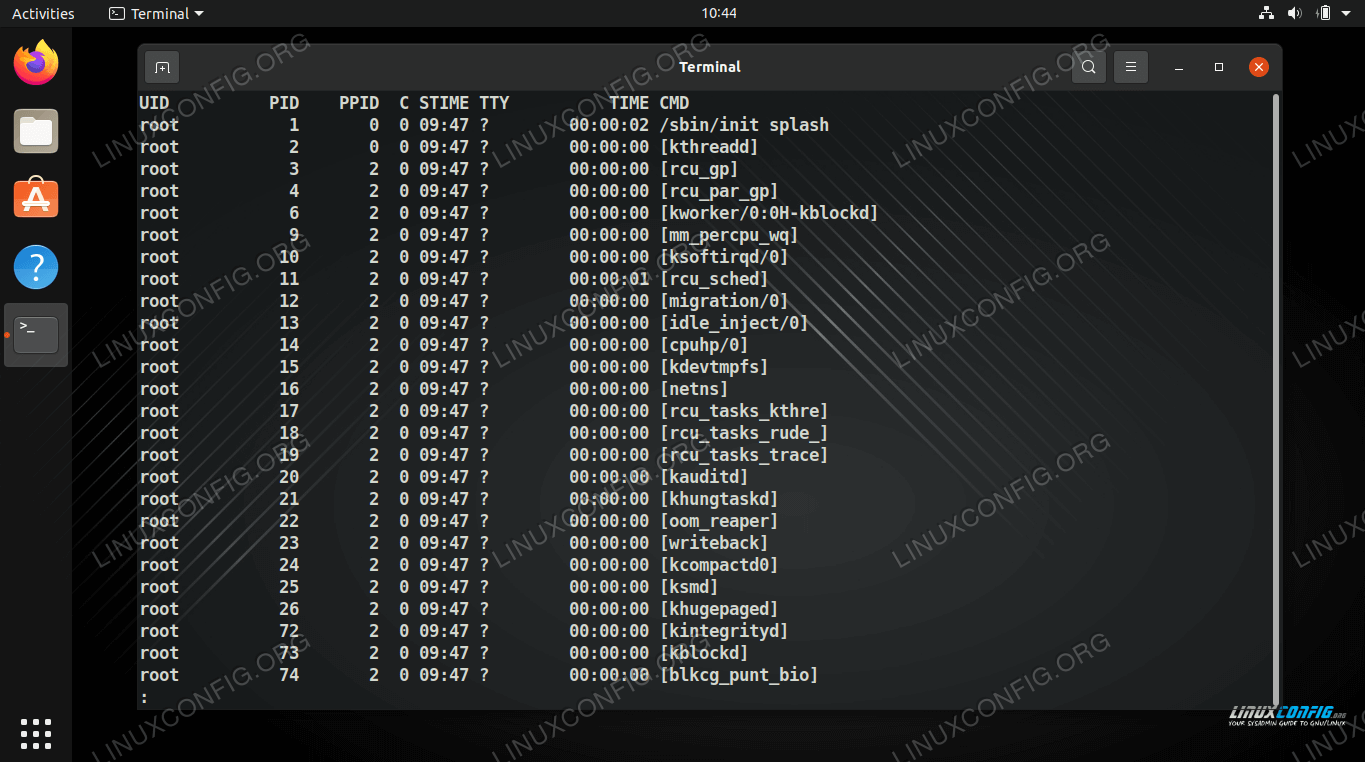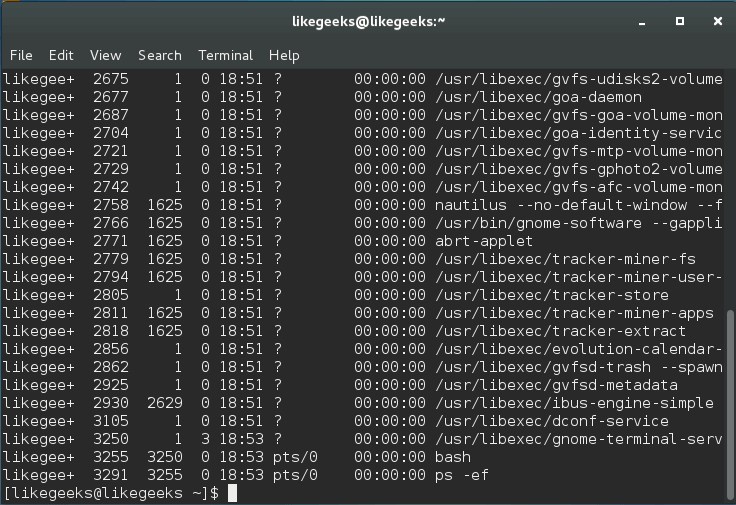

Identical to the t option without any argument. Select all processes associated with this terminal. Select all processes except those that fulfill the specified conditions (negates the selection). It is normally implied by the a flag, and is only useful when operating in the SunOS4 personality. This flag is obsolete and may be discontinued in a future release. Really all processes, even session leaders. Select all processes except session leaders. Select all processes except both session leaders and processes not associated with a terminal. An alternate description is that this option causes ps to list all processes with a terminal ( tty), or to list all processes when used together with the x option. The set of processes selected in this manner is in addition to the set of processes selected by other means. Lift the BSD-style "only yourself" restriction, which is imposed upon the set of all processes when some BSD-style (without " -") options are used or when the ps personality setting is BSD-like. Syntax ps Options: Simple Process Selection a A process is shown if it meets any of the given selection criteria. The default selection is discarded, and then the selected processes are added to the set of processes to be displayed.

These effects are not considered when options are described as being "identical" below, so -M is considered identical to Z and so on.Įxcept as described below, process selection options are additive. The use of BSD-style options also changes the process selection to include processes on other TTYs (terminals) that are owned by you alternately, this may be described as setting the selection to be the set of all processes filtered to exclude processes owned by other users or not on a terminal. You can override this with the PS_FORMAT environment variable. The use of BSD-style options adds process state ( stat=STAT) to the default display and show the command arguments ( args=COMMAND) instead of the executable name. It displays the process ID ( pid=PID), the terminal associated with the process ( tname=TTY), the cumulated CPU time in hh:mm:ss format ( time=TIME), and the executable name ( ucmd=CMD). This behavior is intended to aid in the transitioning of legacy scripts, but it is subject to change, and thus should not be relied upon.īy default, ps selects all processes with the same effective user ID ( euid=EUID) as the current user and associated with the same terminal as the invoker.

If the user named " x" does not exist, ps may interpret the command as " ps aux" instead and print a warning. The POSIX and UNIX standards require that " ps -aux" print all processes owned by a user named " x", and printing all processes that would be selected by the -a option. Note that " ps -aux" is different than " ps aux". There are some synonymous options, which are functionally identical, due to the many standards and compatible ps implementations. Options of different types may be freely mixed, but might cause conflicts. GNU long options, which are preceded by two dashes (" -").BSD options, which may be grouped and must not be used with a dash.UNIX options, which may be grouped and must be preceded by a dash (" -").This documentation describes a version of ps common to many distributions of Linux. Every operating system's version of ps is slightly different, so consult your documentation for specific options. On every UNIX-like operating system, the process status command ( ps) displays information about active processes.


 0 kommentar(er)
0 kommentar(er)
